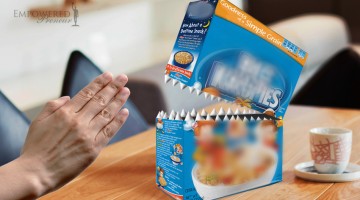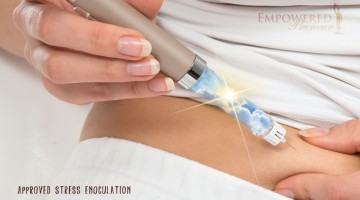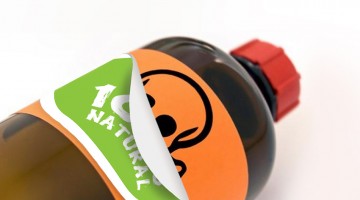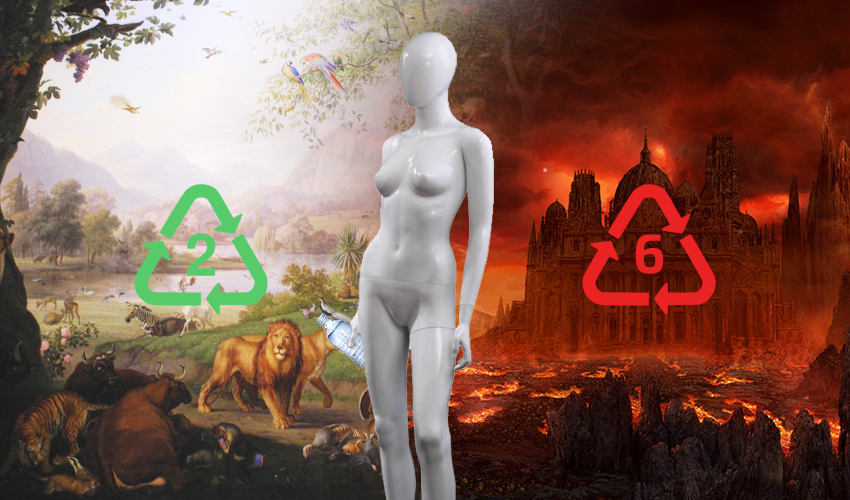They Don’t teach this stuff to you where you need it! EMPOWEREDpreneur is here to remind you What plastics you should consider using ( 2,4,5) and which ones are only fit for SATAN’s clan and EVIL politicians!!
Plastic bottles/containers have been graded and labelled find the threat they pose to your health. Whenever you buy bottled liquids make sure to check the plastic grading on the bottle; it would be indicated on the top, the label, or some other part of the bottle. This is A code that may save your life, if you havfe to print this out and put it in your walllet/stylish purse until you memorize it

-
PET or PETE
PET stands for Polyethylene terephthalate; this type of plastic packaging is created for single/one time use. You are most likely to find bottled water in this kind of plastic. Re-use and repeated use of this plastic leads to leaching. The bacterial growth, chemicals, and other heavy metal released by such plastic containers lead to hormonal imbalances in humans and are known to cause many chronic diseases.
-
HDP or HDPE
High-density polyethylene, abbreviated as HDP, releases no chemicals and is recyclable. It is used for milk jugs, cereal box liners and refillable plastic bottles. Being insect resistant, recyclable, and safe, it is best to use bottles with #2 marking that indicate HDP plastic.
-
PVC
Polyvinyl Chloride is usually used for construction products such as pipes, medical tubing, wire and cable insulation, food wrapping and cooking oil bottles. It contains “plasticizers”- toxic chemicals used for softening it into a more flexible form. Traces of these chemicals can leach out of PVC hence look for alternatives to such plastic containers.
-
LDPE
Low-density polyethylene, due to its flexibility, is used to manufacture frozen food bags, and squeezable bottles like mustard. It is tough and close to being unbreakable and hence is also used for grocery store bags, plastic wraps, and garbage bags. It is a safer plastic however since it is not environment friendly you should look for alternatives, plus it is sourced from fossil fuels which makes it not renewable.
-
PP
Polypropylene has heat-resistance qualities which makes this a good option for hot-fill liquids. It also is strong and has good chemical resistance. This white-colored or semi transparent plastic is commonly used for yogurt containers, margarine tubs, packing for syrups, and medicine bottles. Recent studies have found that two chemical compounds- quaternary ammonium biocides and oleamide- may leach out and they could possibly pose health threats hence until more research is done in this area PP may not be the safest bet.
-
PS
Polystyrene has a low melting point and is typically used for protective packaging, containers, lids, cups, bottles and trays for e.g, styrofoam drinking cups, egg cartons, take-out food containers, and plastic picnic cutlery. It contains two carcinogenic chemicals styrene and benzene so do not let these come these containers come in contact with heat. Basically, long-term use or re-use of such plastic is completely unadvisable. To be avoided!
-
PC and other (non-labelled stuff)
Mostly this includes polycarbonate. This plastic most likely to contain BPA (bisphenol A), which is a dangerous chemical tied to neurological disorders, different types of cancers, heart disease, and is an endocrine disruptor. Commonly used for 5 gallon reusable bottles, some citrus juice and catsup bottles, and sports water bottles. Absolutely do not use such plastic bottles.
Lets use non leaded Glass and ceramics when we can, Filtered water that gets endocrine disrupting plastics leached back into them is pointless! choose your liquid vessels well! until next time see You Healthy Wealthy and Wise somewhere in The EMPOWEREDpreneur network!!!









 HDP or HDPE
HDP or HDPE LDPE
LDPE PP
PP
No Comment